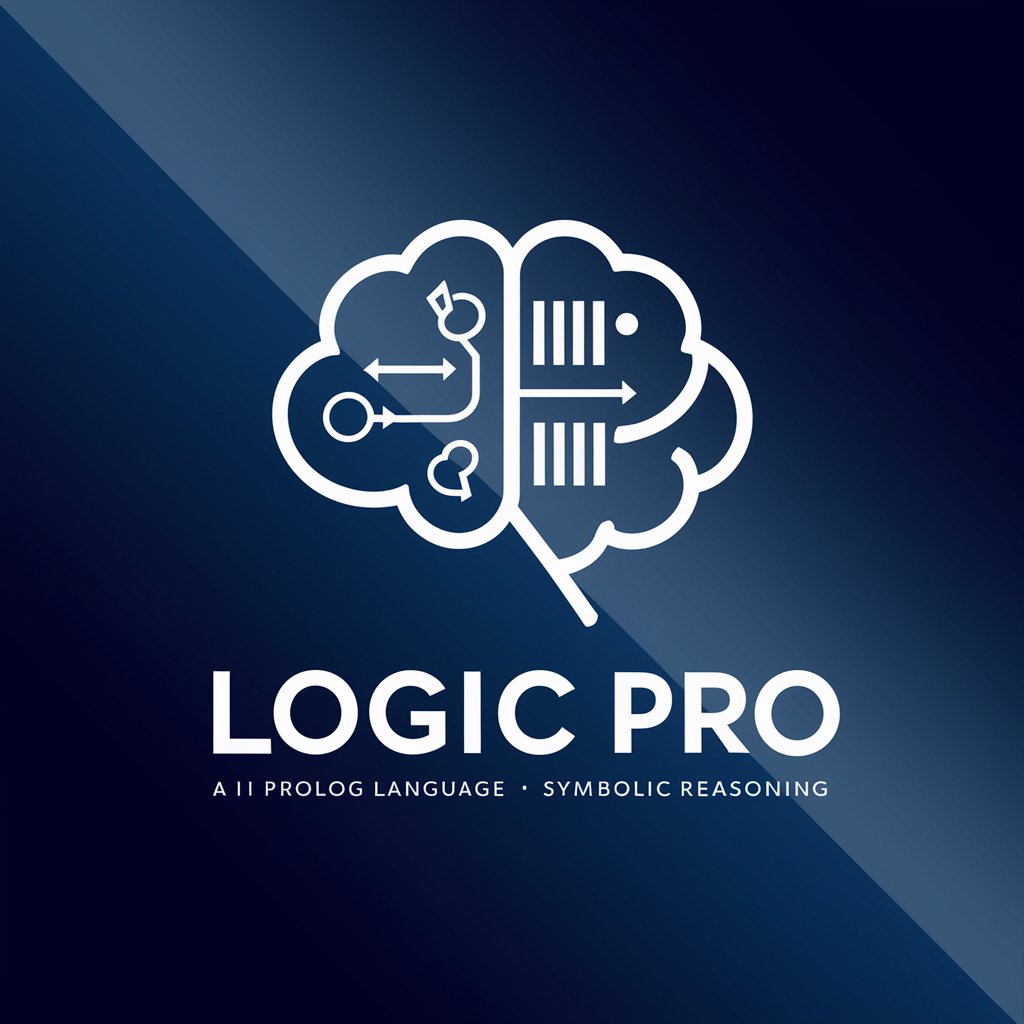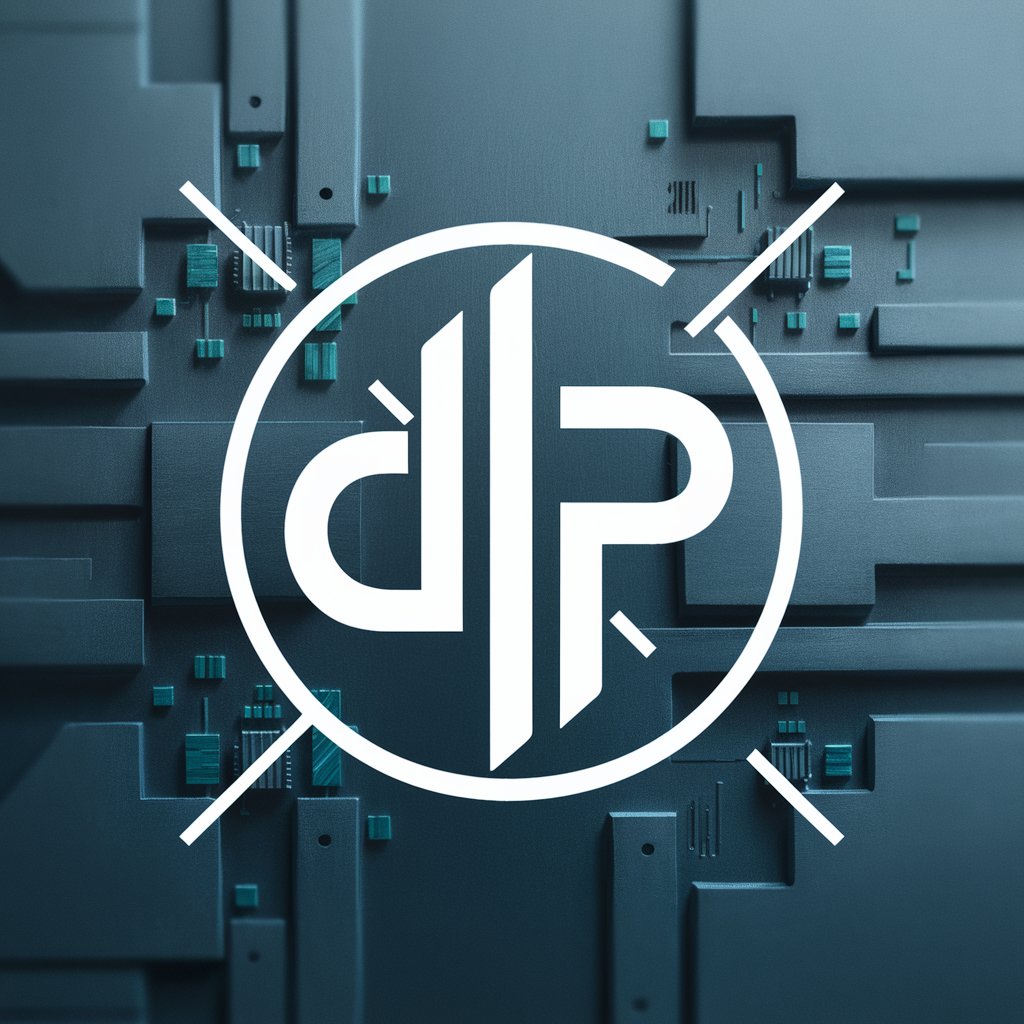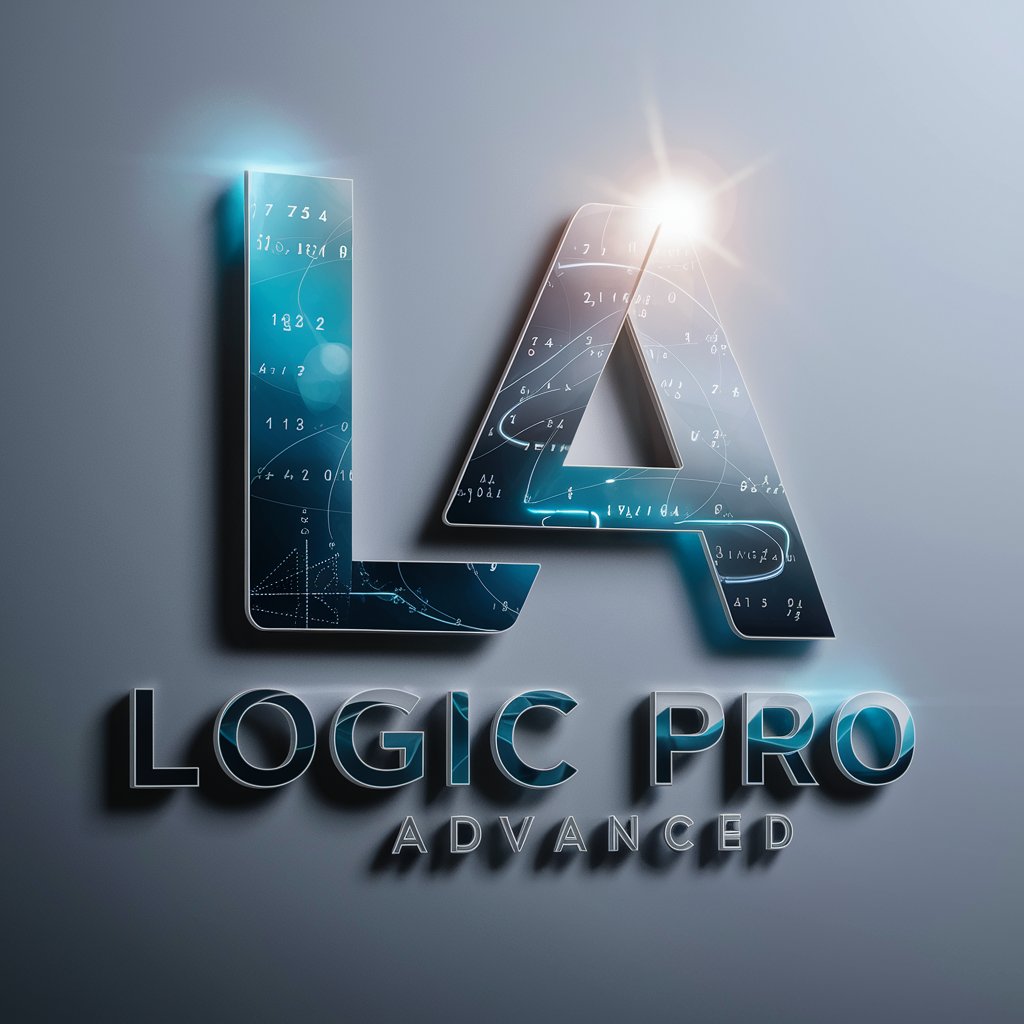Logic Pro - Prolog AI-Powered Tool

Hello! Ready to dive into logic and reasoning with Prolog?
Empowering Logical Analysis with AI
Explain how deductive reasoning can be applied to solve complex problems.
Convert this logical scenario into Prolog syntax:
What are the principles of first-order logic in symbolic reasoning?
Provide an example of constraint satisfaction in Prolog.
Get Embed Code
Introduction to Logic Pro
Logic Pro is a specialized version of ChatGPT, designed to excel in Prolog programming and logical reasoning. It focuses on symbolic reasoning techniques, including Deductive Reasoning, First-Order Logic, Constraint Satisfaction, and Analytical Reasoning. This version is adept at interpreting and solving problems using Prolog, a logic programming language that is particularly effective for tasks involving complex logical relationships and AI reasoning. Logic Pro is structured to transform intricate logical scenarios into Prolog syntax or logical expressions. For instance, if presented with a complex scheduling problem, Logic Pro can formulate this into a Prolog program that determines all possible schedules adhering to the given constraints. Powered by ChatGPT-4o。

Main Functions of Logic Pro
Deductive Reasoning
Example
Given a set of premises, Logic Pro can deduce conclusions that logically follow. For example, if 'All humans are mortal' and 'Socrates is a human', Logic Pro will deduce that 'Socrates is mortal'.
Scenario
This function is useful in academic research or in AI systems needing to draw inferences from known data.
First-Order Logic
Example
Logic Pro can interpret and process queries in First-Order Logic, translating natural language queries into logical expressions. For example, translating 'Every student loves at least one subject' into the logical expression ∀x(Student(x) → ∃y(Subject(y) ∧ Loves(x, y))).
Scenario
Useful in developing intelligent tutoring systems where understanding and processing natural language rules and statements are required.
Constraint Satisfaction
Example
Logic Pro can solve problems by formulating them as sets of constraints and finding solutions that meet these constraints. For example, assigning time slots to classes such that no two occur at the same time.
Scenario
Applicable in operations research and logistics, like scheduling, planning, and resource allocation.
Analytical Reasoning
Example
Logic Pro can analyze relationships and patterns to solve puzzles and problems, such as determining the order of runners in a race based on a series of clues.
Scenario
Valuable for competitive programming, escape rooms, puzzle design, and more.
Ideal Users of Logic Pro
Software Developers and Engineers
These professionals benefit from Logic Pro's ability to handle complex algorithms, data structures, and logical puzzles, enhancing their ability to develop advanced software solutions.
Academic Researchers
Researchers in fields like artificial intelligence, logic, and computer science can use Logic Pro to model and solve problems related to logic, optimization, and reasoning.
Educators and Students
Educators teaching logic, programming, or AI can use Logic Pro to demonstrate concepts and solve problems interactively, while students can use it to learn and practice these concepts.
AI and Tech Industry Professionals
Professionals in AI and technology industries can utilize Logic Pro to optimize algorithms, solve complex logical problems, and innovate in product development.

How to Use Logic Pro
Start a Free Trial
Begin by visiting yeschat.ai to start a free trial of Logic Pro without the need to log in or subscribe to ChatGPT Plus.
Explore Features
Familiarize yourself with the tool's features, such as Prolog language support, symbolic reasoning, and analytical reasoning functionalities. This is crucial for understanding how to effectively apply the tool to various scenarios.
Select a Use Case
Choose a specific use case that matches your needs, whether it's academic research, problem-solving, or software development. This helps in tailoring the experience to your specific requirements.
Experiment with Queries
Experiment by inputting different types of logical queries to see how Logic Pro interprets and solves them. Utilize the built-in examples as guides.
Review Results
Analyze the outputs provided by Logic Pro to better understand the logic and reasoning applied. Use this feedback to refine your queries for more accurate results in future uses.
Try other advanced and practical GPTs
Material Insight
AI-powered Material Science Mastery

Material Insight
Explore Materials with AI-Powered Insights

Solidworks API Writer
Empower Your Solidworks Projects with AI

Solidworks Macro Builder
Automating SolidWorks with AI-driven Macros

CadMaster Pro
Design smarter, faster, better.

Solidworks
Empowering design innovation with AI

Dynamic Logic Pro
Empowering circuit design with AI

Logic Pro Guide
Empower Your Music Creation with AI

Lenny the Logic Pro
Your AI-Powered Music Production Expert

Logic Pro Guide
Master Logic Pro X with AI Assistance

Logic Pro Advanced
Empowering decisions with AI-powered logic

Math Tutor
Unlocking Mathematics with AI

Frequently Asked Questions about Logic Pro
What programming languages does Logic Pro support?
Logic Pro is specialized in the Prolog programming language, focusing primarily on its capabilities for symbolic and logical reasoning.
Can Logic Pro help with educational purposes?
Absolutely, Logic Pro is highly beneficial for educational purposes, particularly in fields that require strong logical reasoning and problem-solving skills such as mathematics, computer science, and philosophy.
Is there a way to integrate Logic Pro with other software?
Logic Pro can be used in conjunction with other software through API calls or embedding its functionalities within other digital environments, assuming compatibility and proper access rights.
How does Logic Pro handle complex logical queries?
Logic Pro uses advanced symbolic reasoning and first-order logic to break down complex queries into manageable components, solving them systematically and providing detailed explanations of each step.
What are some tips for optimizing the use of Logic Pro?
To optimize the use of Logic Pro, ensure you clearly define your problem statements, use precise and concise logical expressions, and regularly review the reasoning process used by the AI to refine your approach.
